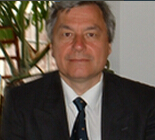Abstract—One of the most important problem to solve in the robots Kinematics and Dynamics is analyze of the joint’s angular and linear accelerations. Because the movements of the robot’s bodies going in the 3D space, the mathematical algorithm must be written in the complex matrix form. The paper show how some cases of the trapezoidal relatives’ velocities characteristics in a joints determine the variation of the acceleration’s vectors in the 3D space. The maximal values of these variations of the angular and linear accelerations influence the variation of the moments and forces. The analyze was made by using the Neutrosophic theory and vitual LabVIEW instrumentation. In a literature are described some methods of the assisted analyze of the acceleration without show the used mathematical model, without one critical analyze of the cases that must be avoid and finally without some conclusions for the researchers. The paper shown all LabVIEW virtual instruments (VI) used for this assisted research. By solving the assisted research of the acceleration will be open the way to the assisted research of the robots’ dynamic behavior, to choose the optimal constructive and functional parameters (dimensions of the bodies, simultaneously, successive or complex configurations of the movements in the robot’s joints, optimal values of the constant relative joint’s velocities, etc.) of the robots to obtain the minimum variation of the forces and moments. The method that was shown in the paper solves one small part of the complex problems of the robot’s kinematics and dynamics
Index Terms—Assisted research, Joint’s accelerations, Neutrosophic theory, Virtual instrumentation, Multi objectives optimization.
A. Olaru is with the University Politehnica of Bucharest, RO 060042 Romania (e-mail: aolaru_51@ ymail.com).
S. Olaru is with METRA Company, Bucharest, RO 060042, Romania (e-mail: serban1978@yahoo.com).
N. Mihai is with the Techno ACCORD COMPany, Leuval, Montreal, Canada (e-mail: mniculae@yahoo.com).
N. Smidova is with Technical University of Kosice, SK 88902, Slovakia (e-mail: nsmidova@yahoo.com).
[PDF]
Cite: A. Olaru, S. Olaru, N. Mihai, and N. Smidova, "Neutrosophic Theory Applied in the Multi Objectives Optimization of the Robot’s Joints Accelerations with the Virtual LabVIEW Instrumentation," International Journal of Modeling and Optimization vol. 10, no. 3, pp. 79-85, 2020.
Copyright © 2020 by the authors. This is an open access article distributed under the Creative Commons Attribution License which permits unrestricted use, distribution, and reproduction in any medium, provided the original work is properly cited
(CC BY 4.0).


